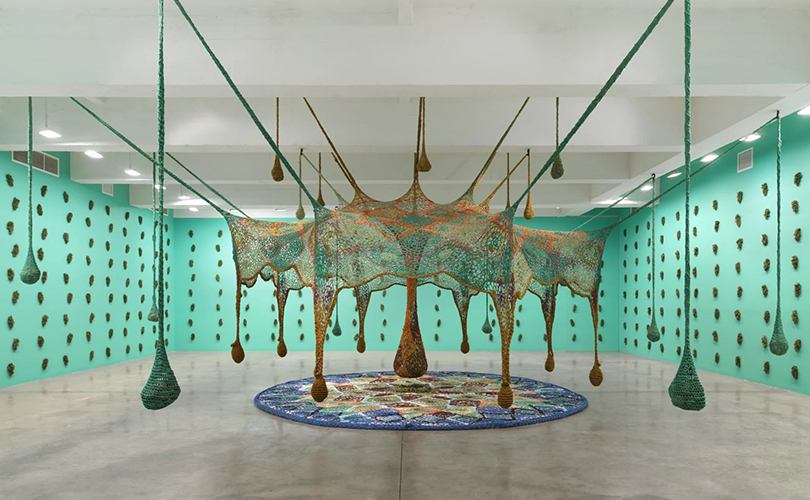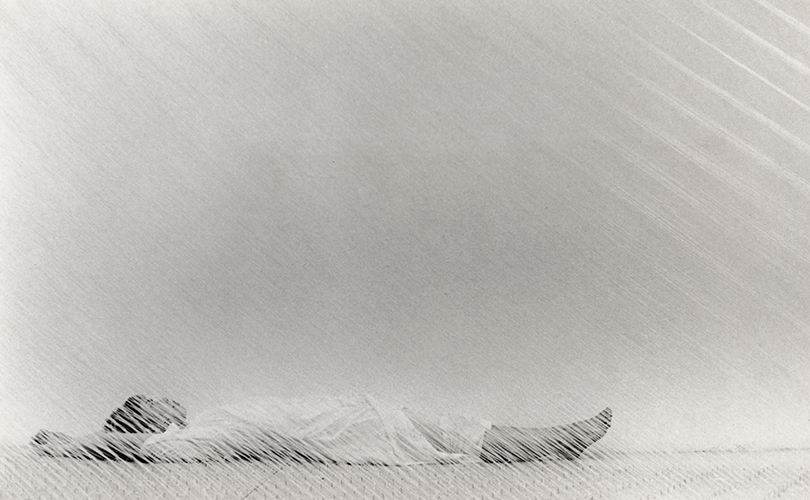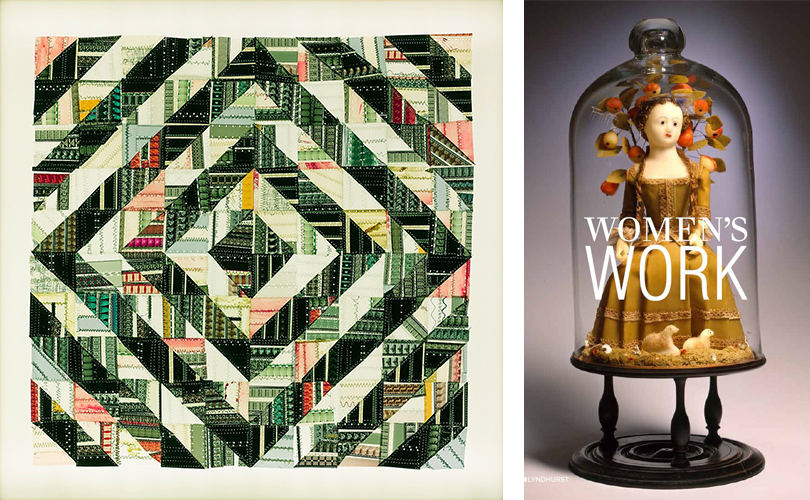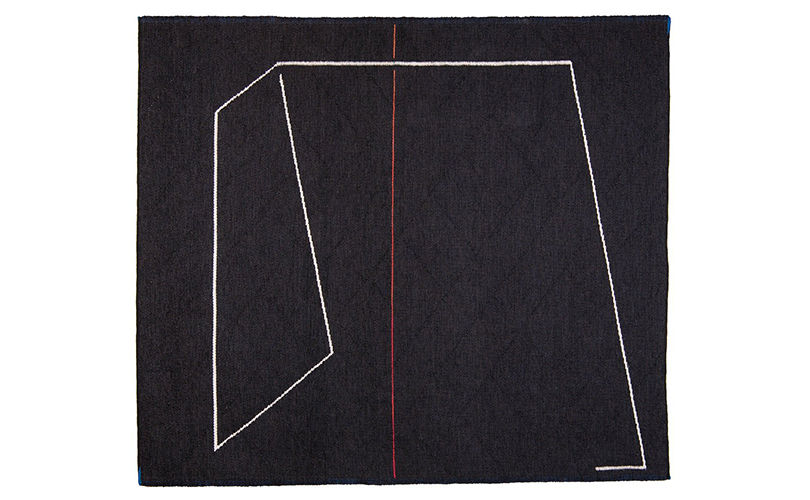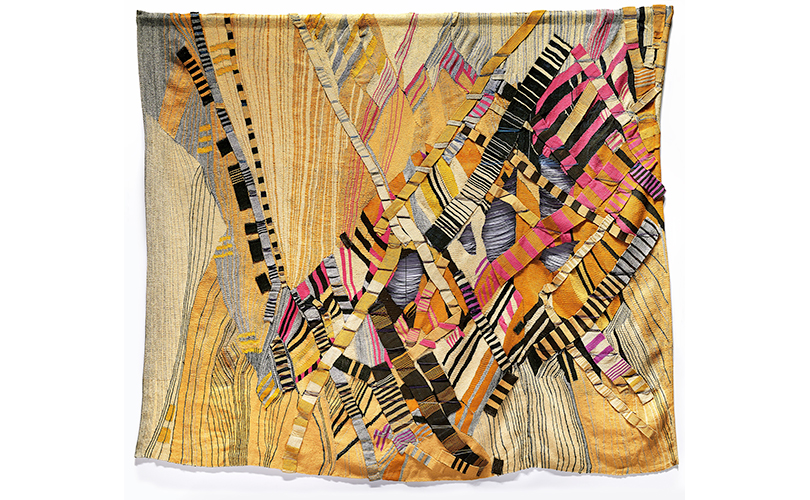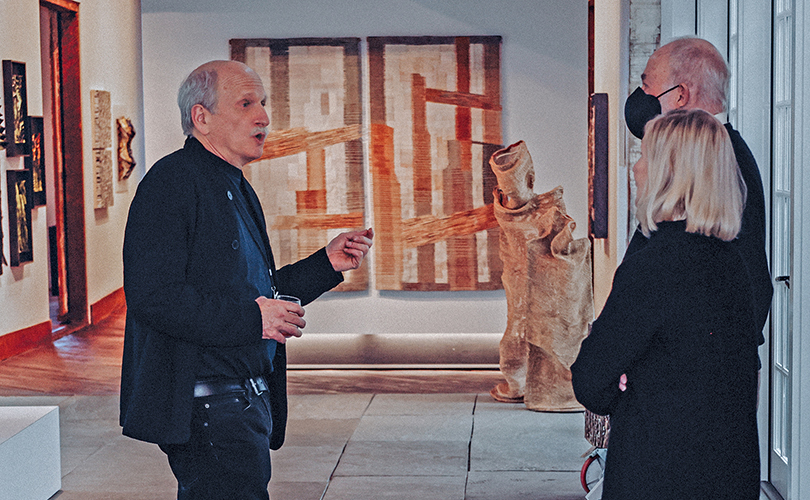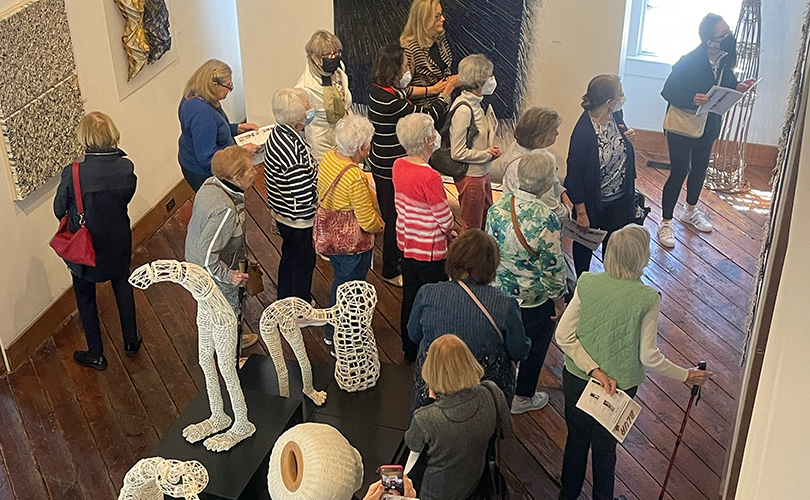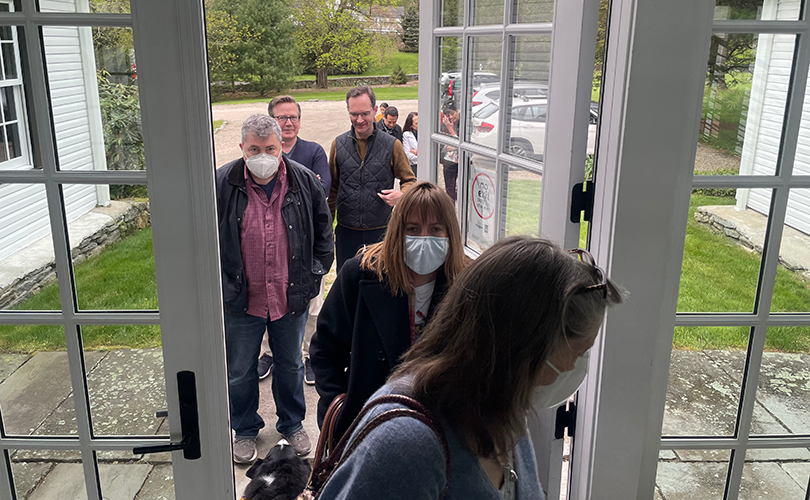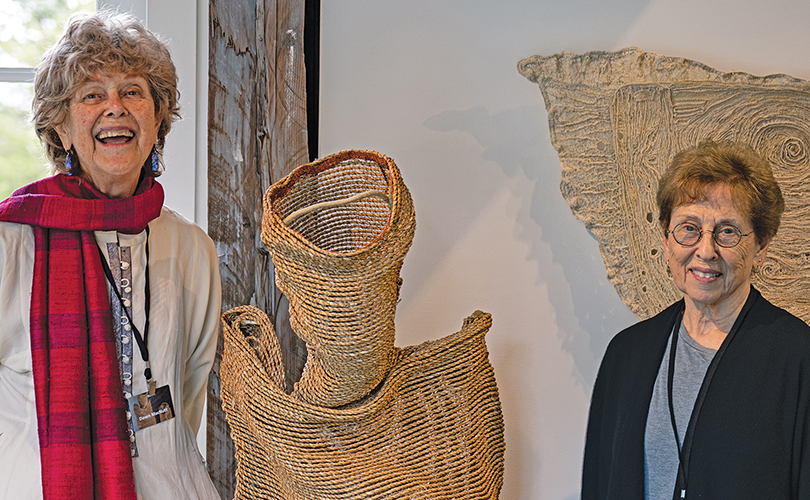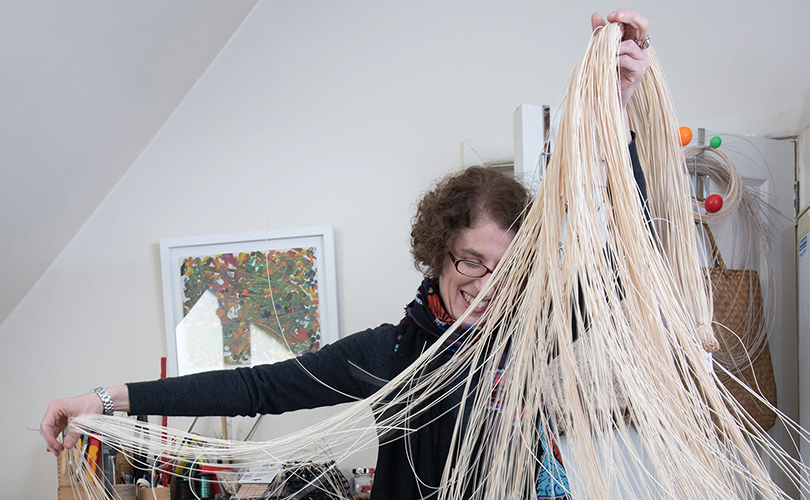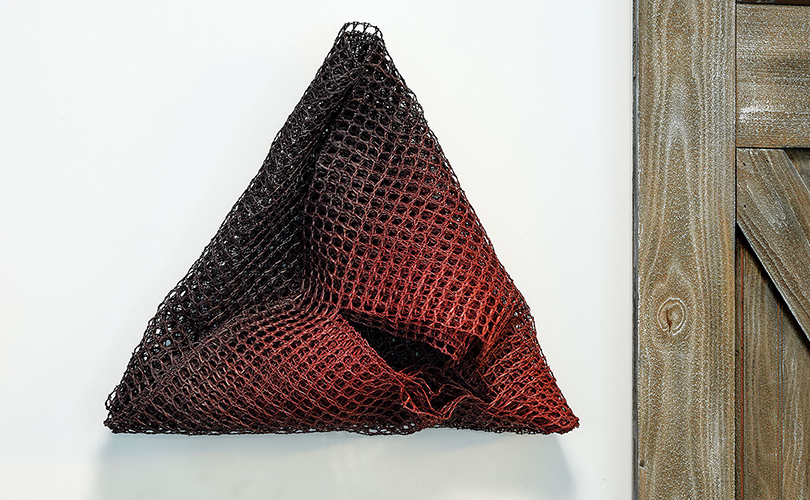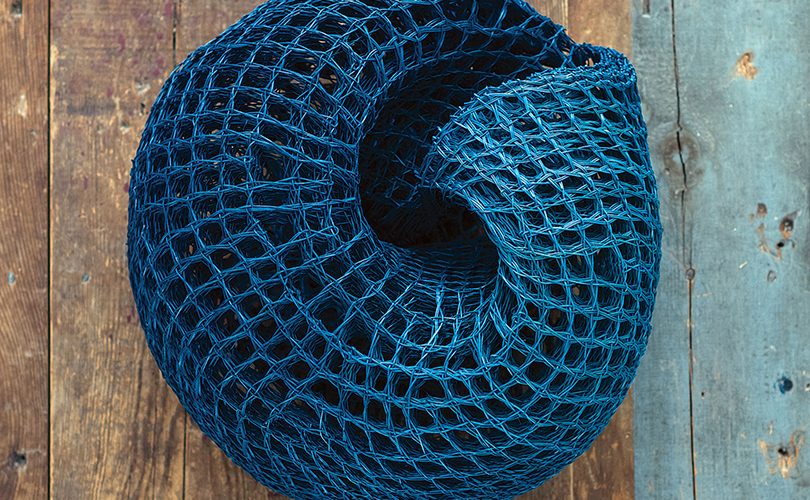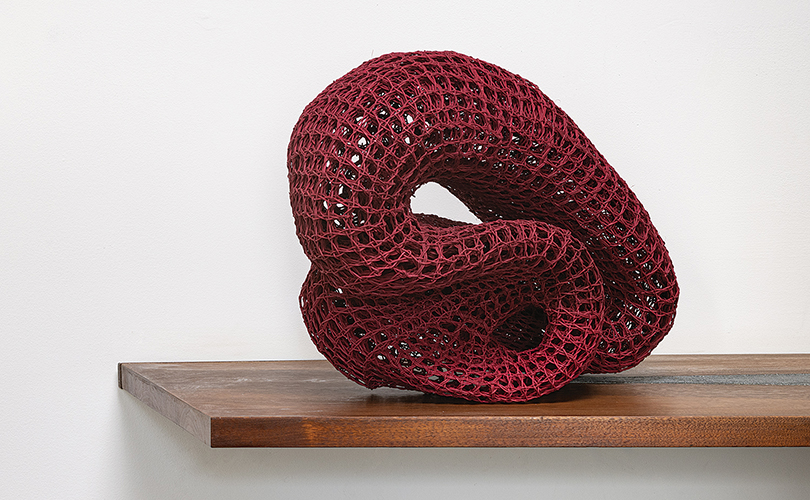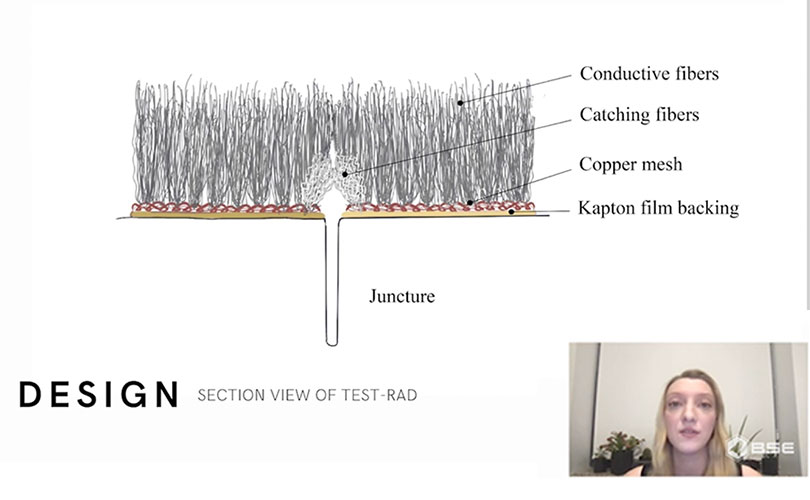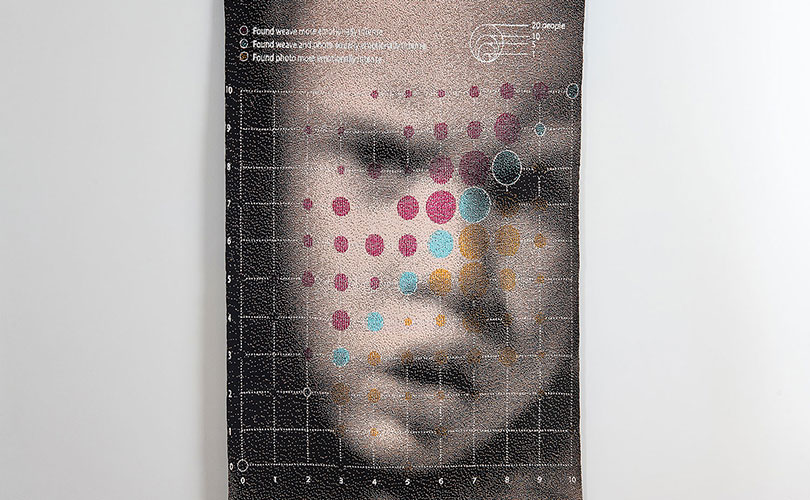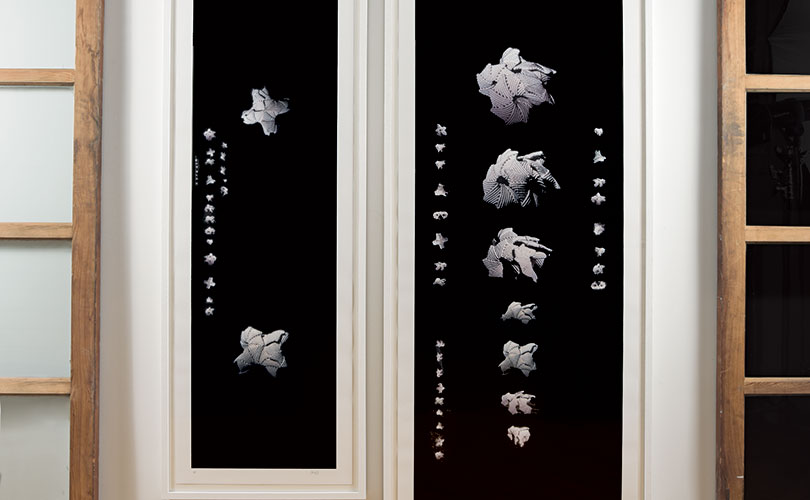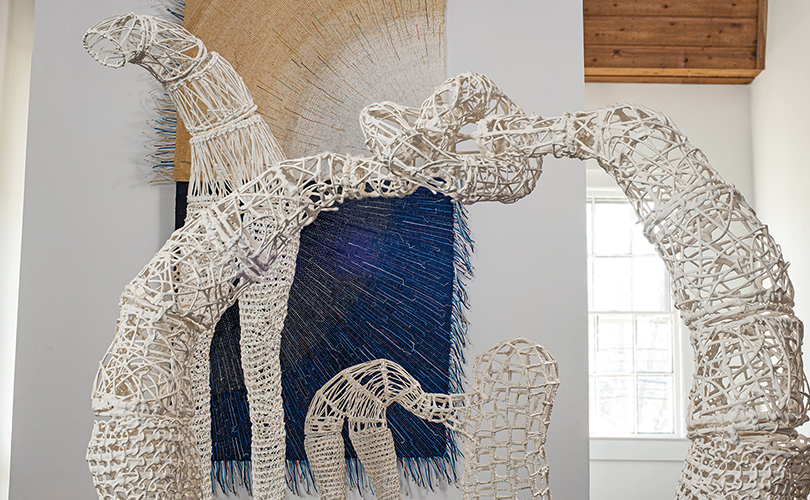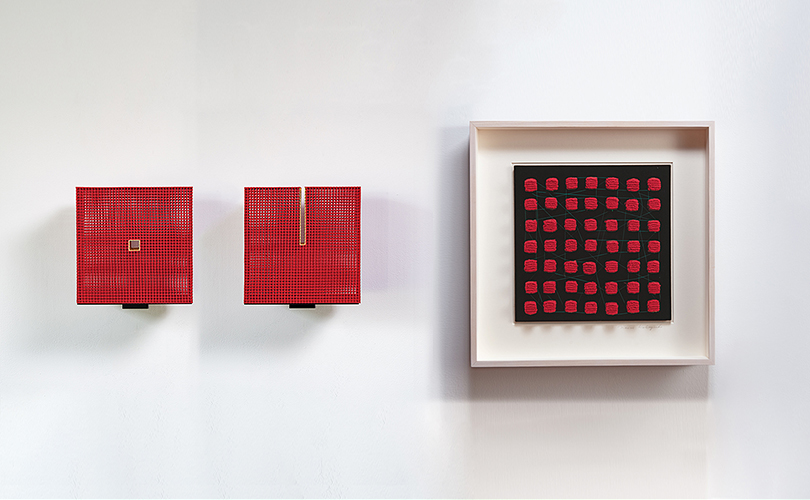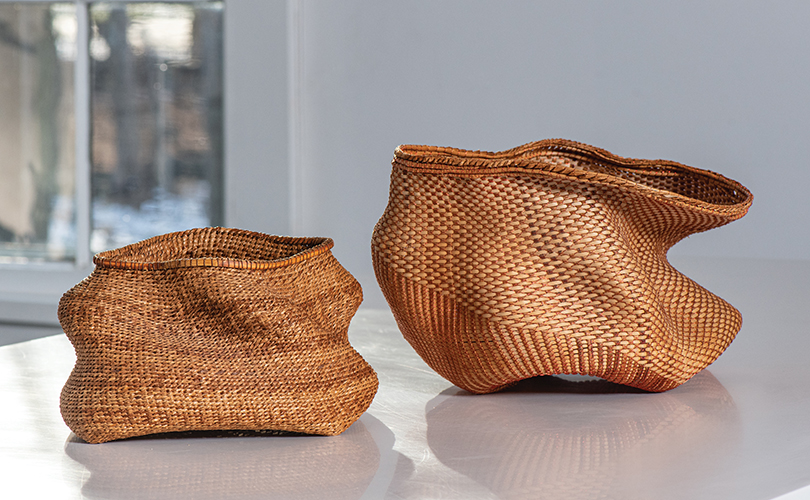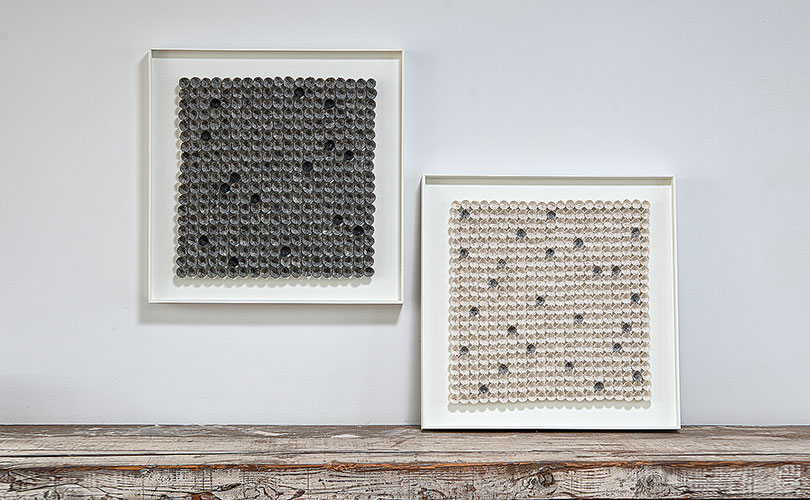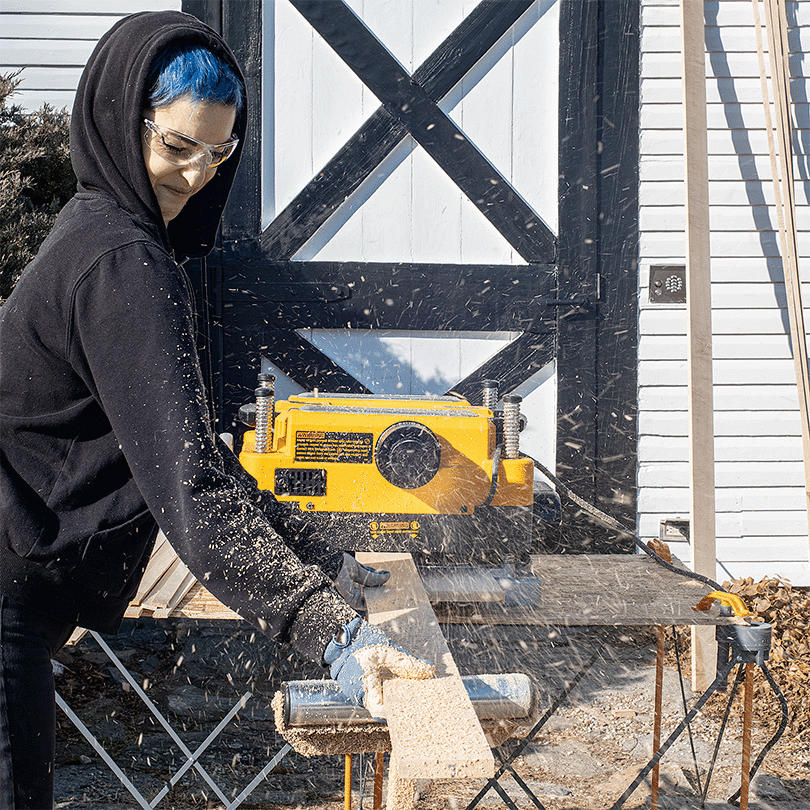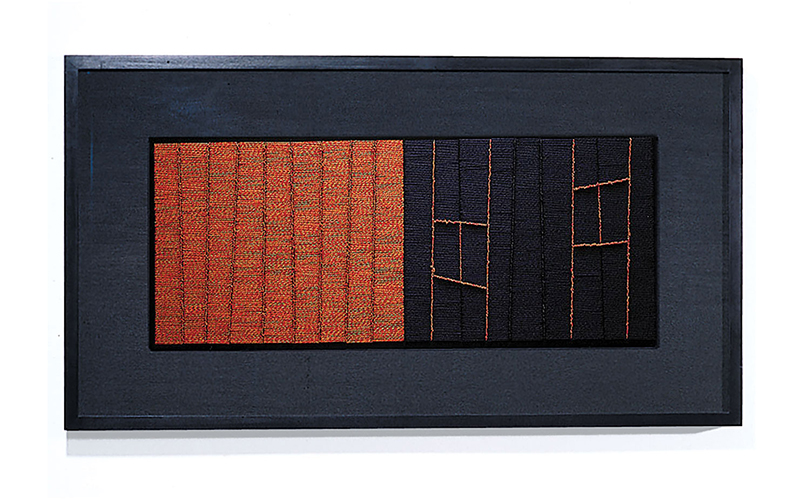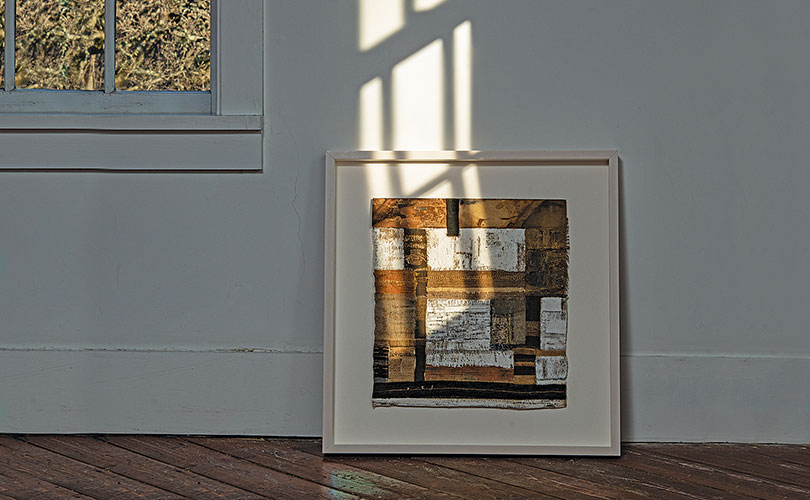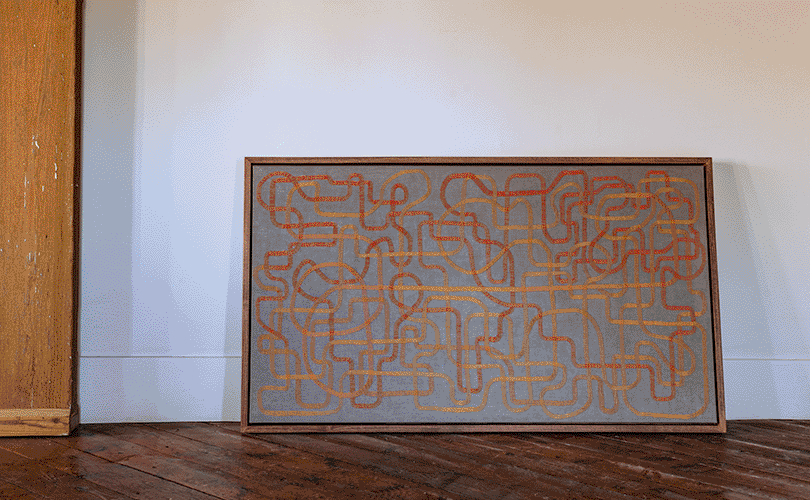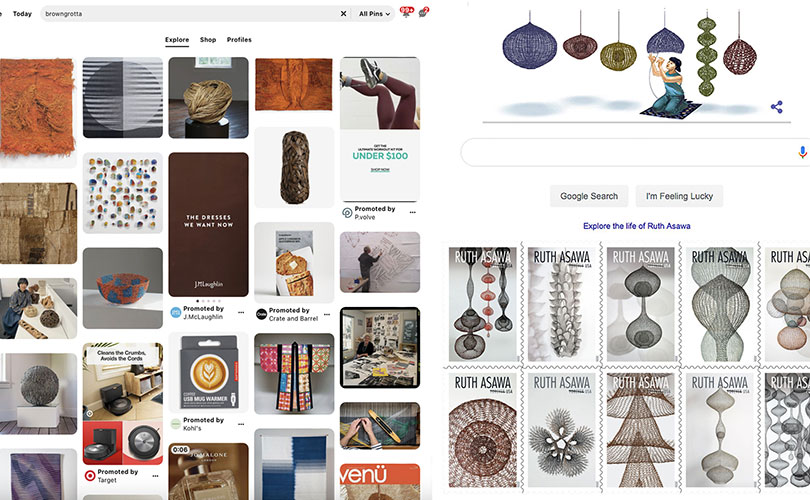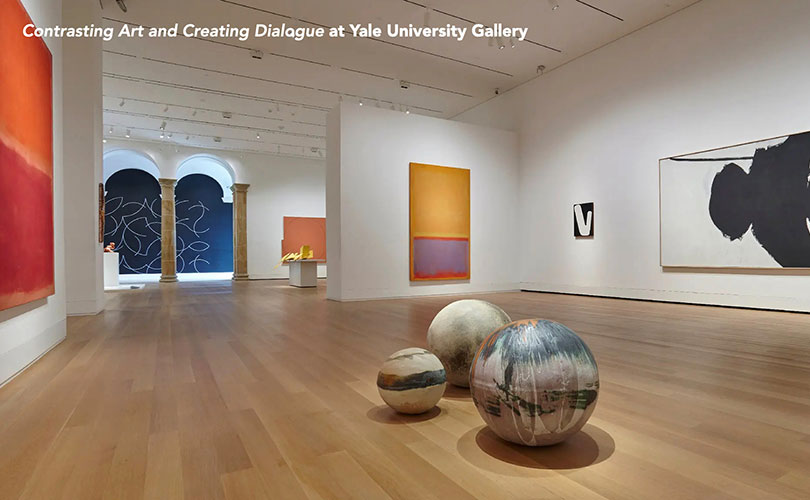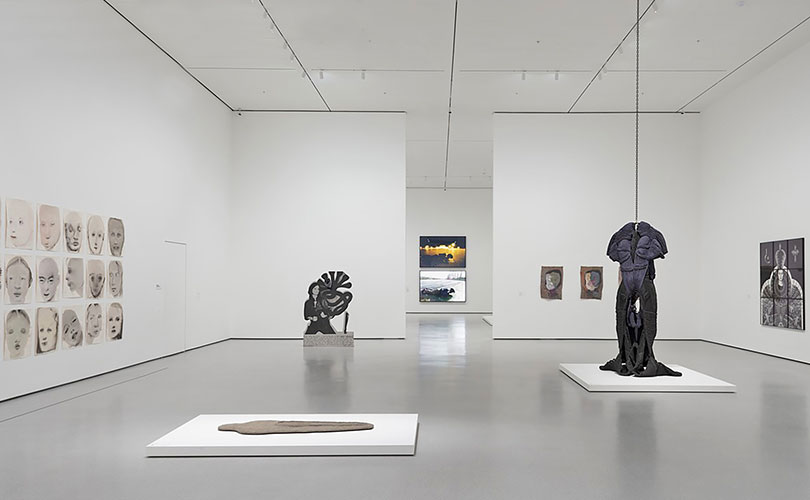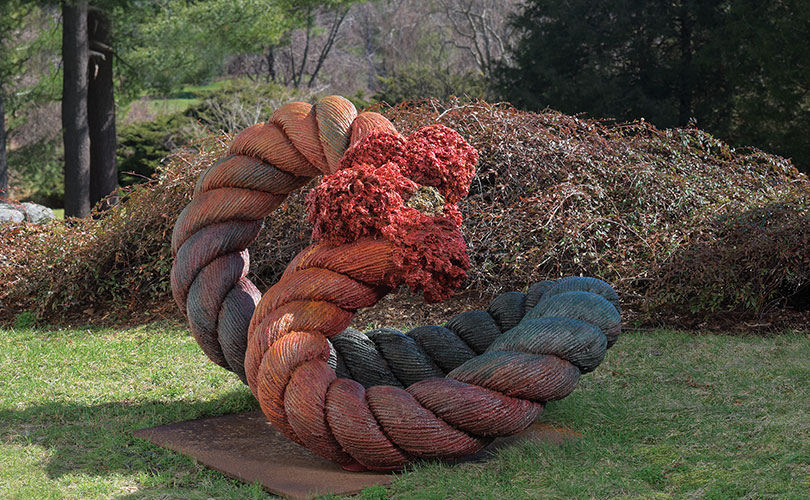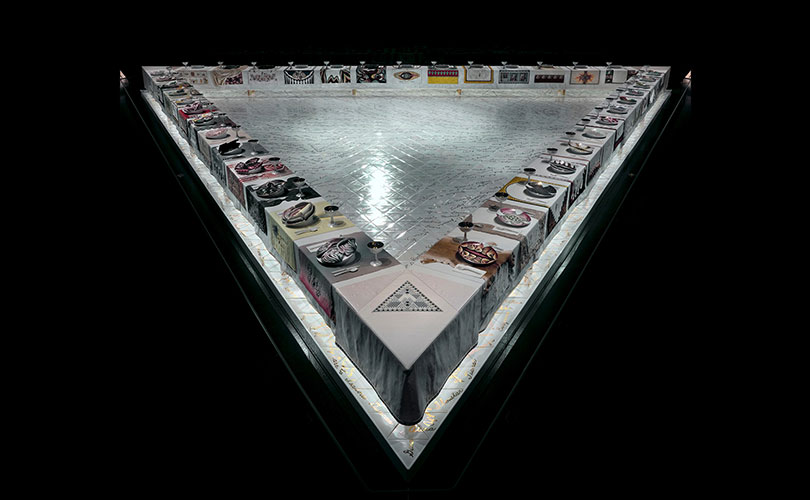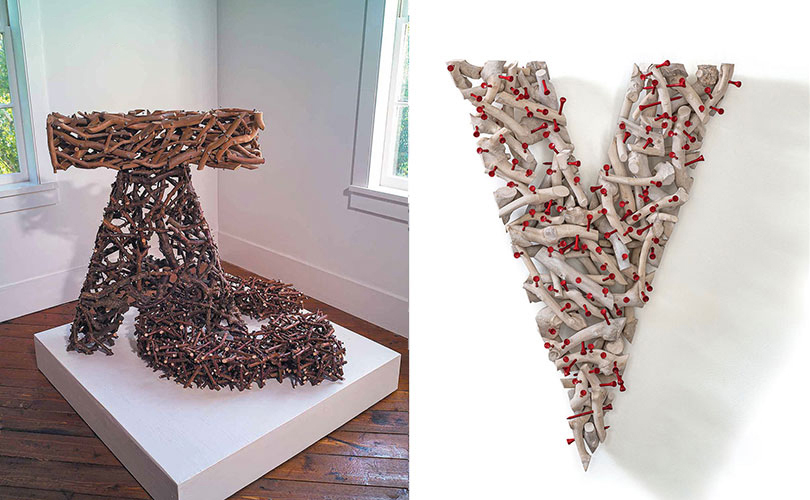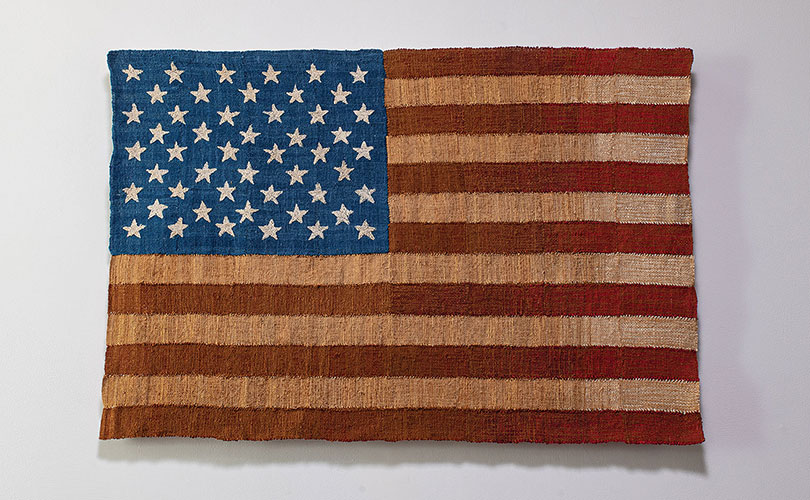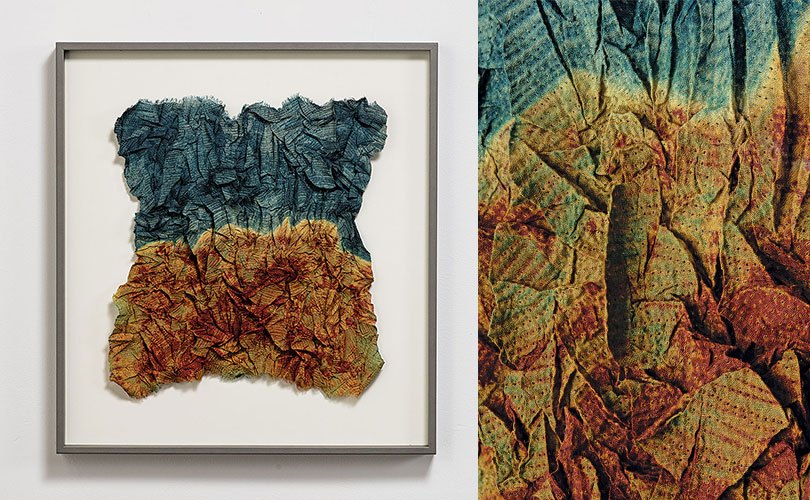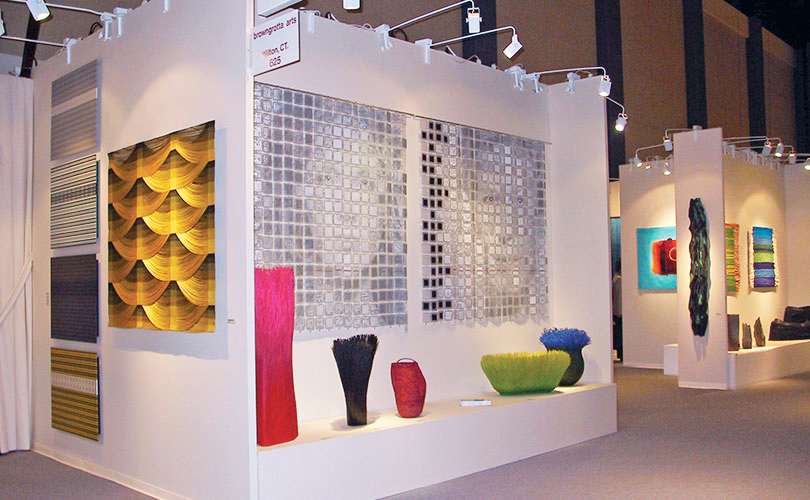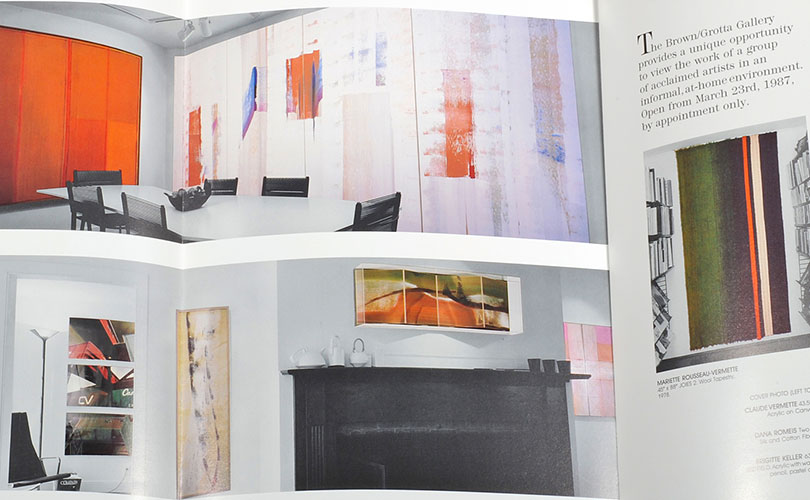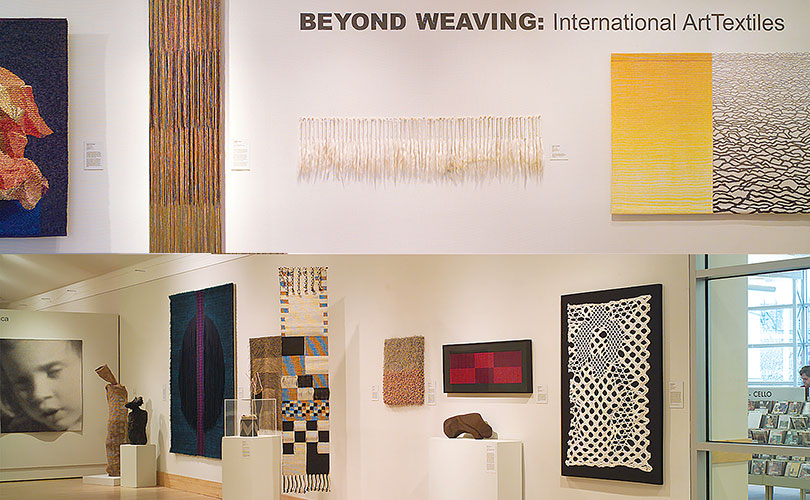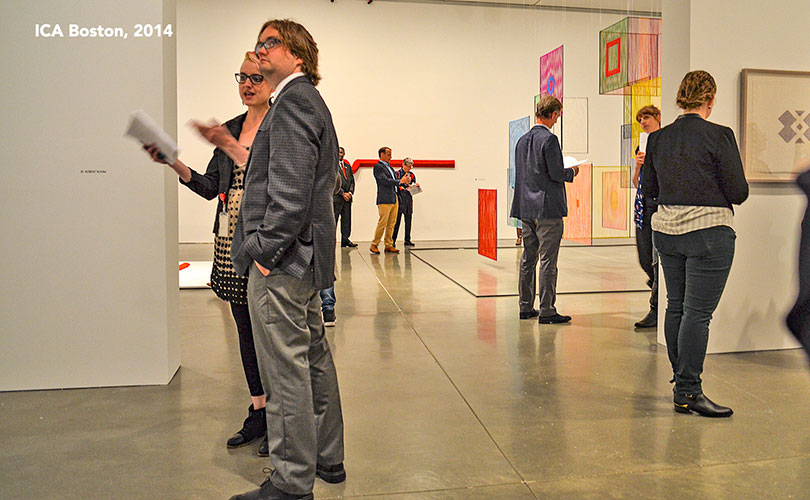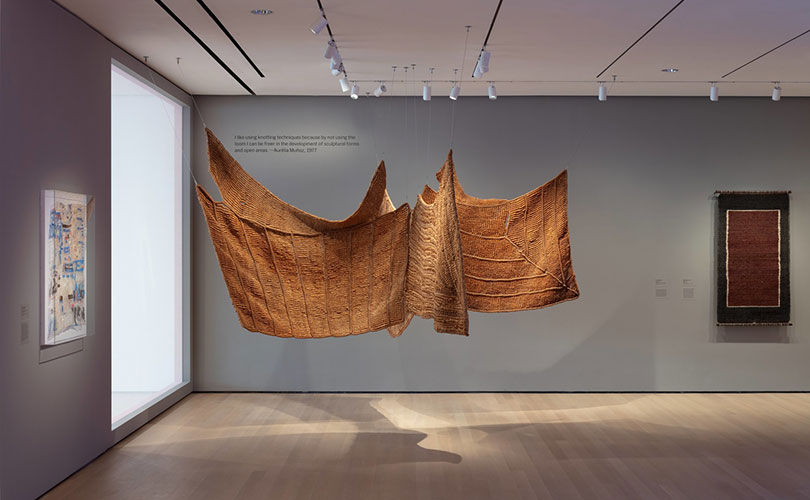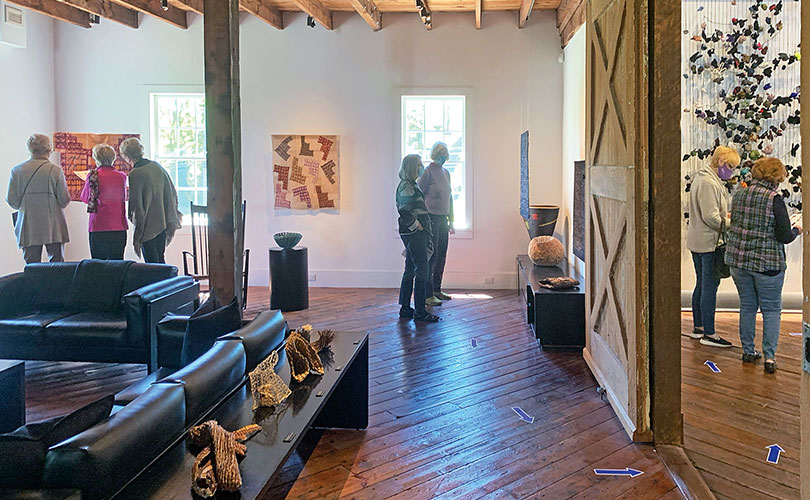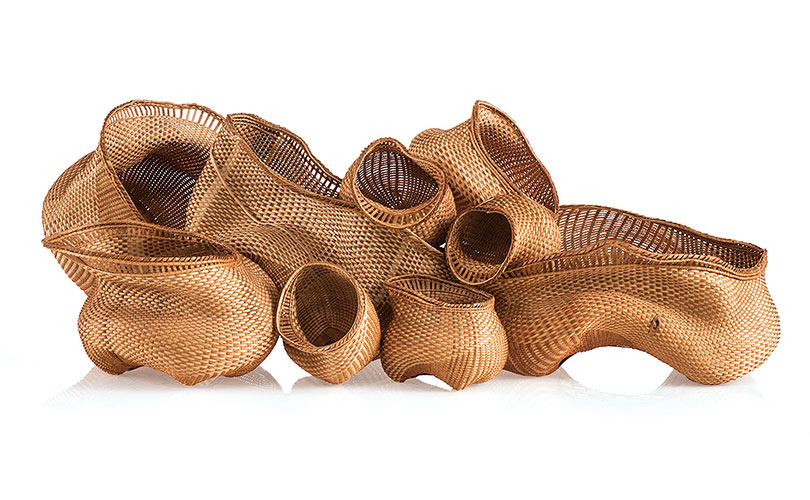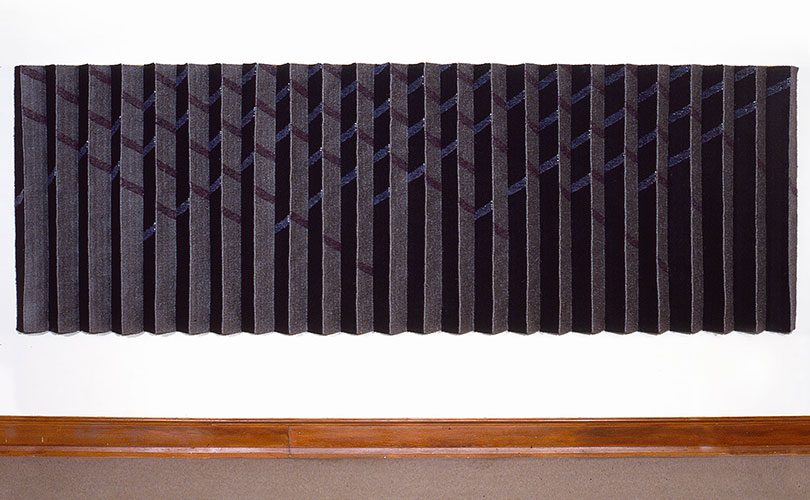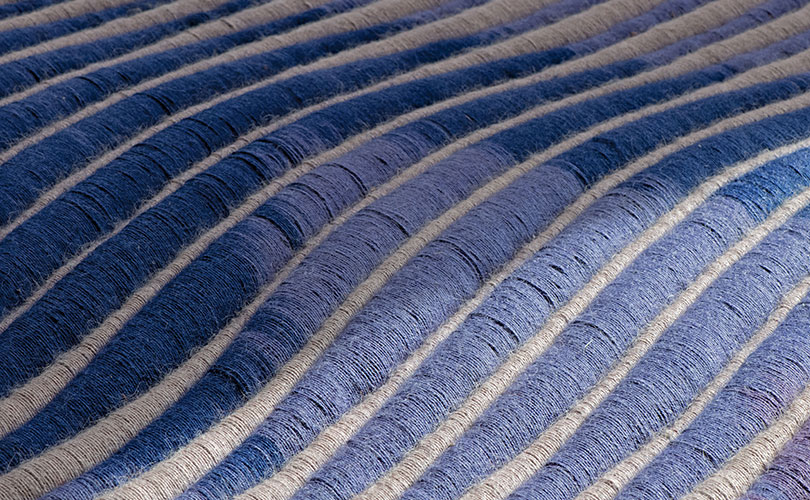The works of art in our last exhibition, Crowdsourcing the Collective: a survey of textile and mixed media art utilized a abundance of unusual materials — hog gut, kibiso silk, seaweed and agave among them. Over the next several months, we’ll take a closer look at less-than-common materials and the artists who use them. This week: horsehair.
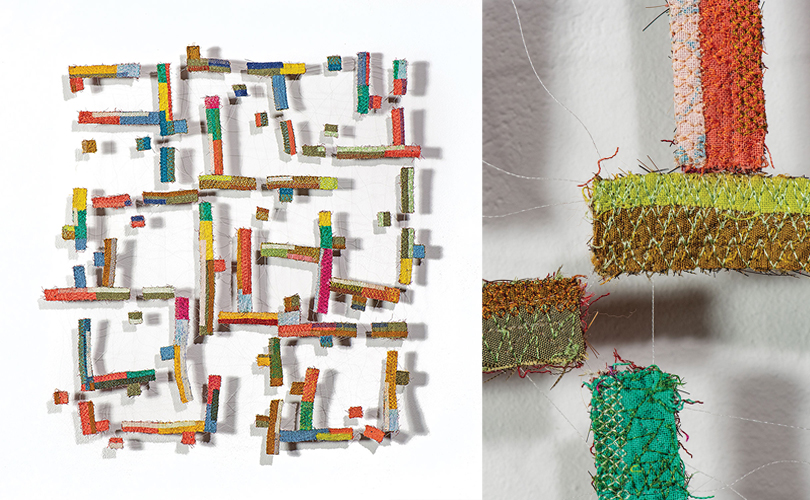
In the early 1990s, Dutch artist Marian Bijlenga’s drawing tool narrowed to a single material: horsehair. (Jessica Hemmings, Embroidery magazine, March/April 2008, pp. 22-27). The fiber provides Bijlenga the necessary strength and flexibility to construct embroidered compositions of lines and dots. Bijlenga uses textiles in her work, but textile application is not her real interest. She secures the horsehair in her works with embroidery, but she has said “for me it is not real embroidery. Sometimes my work is in an embroidery exhibition, but it could also be in a sculpture exhibition. For me it is not so important.”
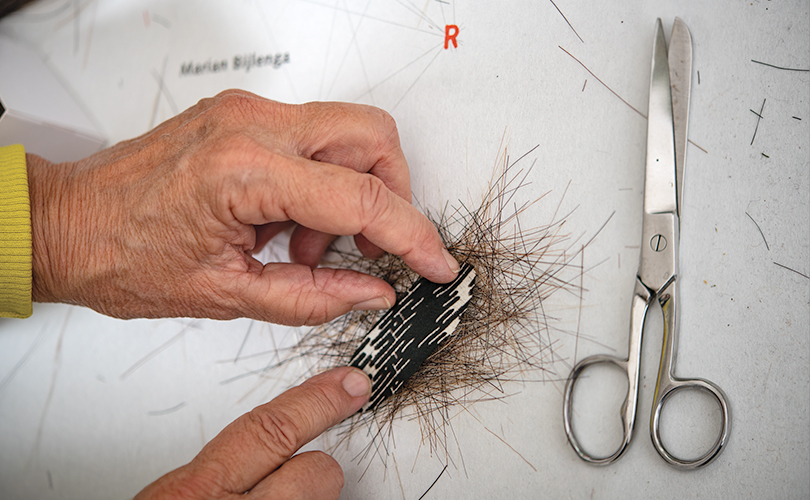
Bijlenga studied textile design but for her, weaving was too slow. “It takes a lot of time before you could start,” she says, “and I did not like the technique. I was looking for a more direct way of working.” Bijlenga took the threads held by the loom and began instead to make drawings, stiffening the fiber by dipping it in glue. ” I work with thread, fabric and horsehair, fishscales and parchment, materials which are soft, light, flexible and open to endless development.”
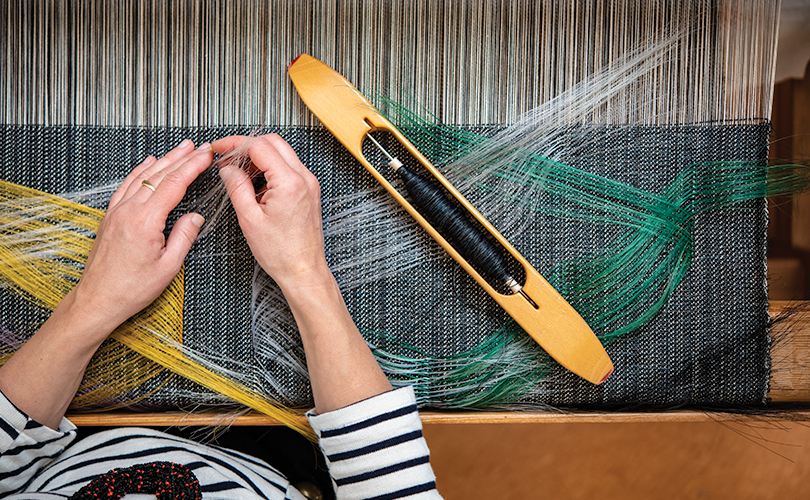
Marianne Kemp has developed a unique specialty in weaving with horsehair. She uses techniques that she has developed which enable her to mold, knot, curl, and loop the material — which she interweaves with linen, cotton, silk, or wool — in unconventional ways. “Through the different properties and qualities like texture, color, and the shining of horsehair, the end result can be shiny and smooth – organic and wild – flexible and stiff,” wrote Sam at TextileArtist.Org (https://www.textileartist.org/ marianne-kemp-horsehair-weaving/).
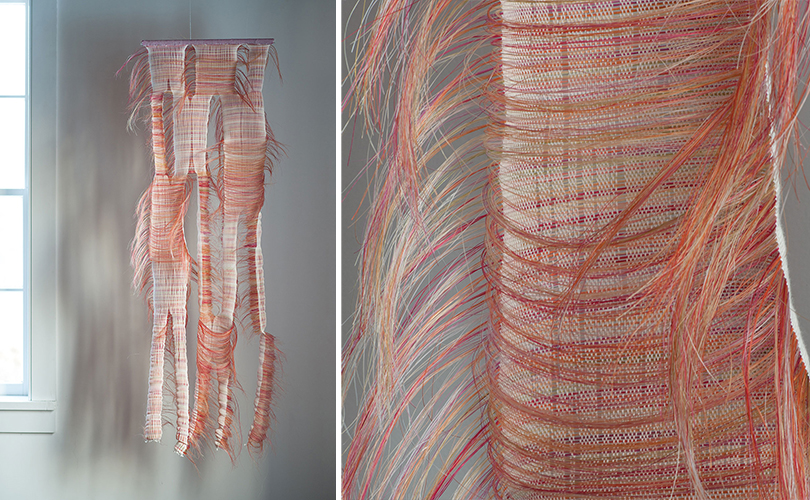
Some of her works are meditative in their repeat of patterns, others boisterous in their choice of bright colors. In 2001, Kemp created a small collection of designs based on her hand weavings with John Boyd Textiles, professional weavers of horsehair in the UK. She was excited to discover that it was possible to weave her design mechanically. Kemp spent three-and-a-half years in London, then traveled to Cape Town South Africa. With just one tail of horsehair and a loom borrowed from the local Weavers Guild of Cape Town, Kemp designed many interesting new weavings, including a large wall hanging, called Africa. “It was a great time, learning from local weavers and giving them workshops too, helping them discover new techniques,” Kemp told Sam at textileArtist.Org.
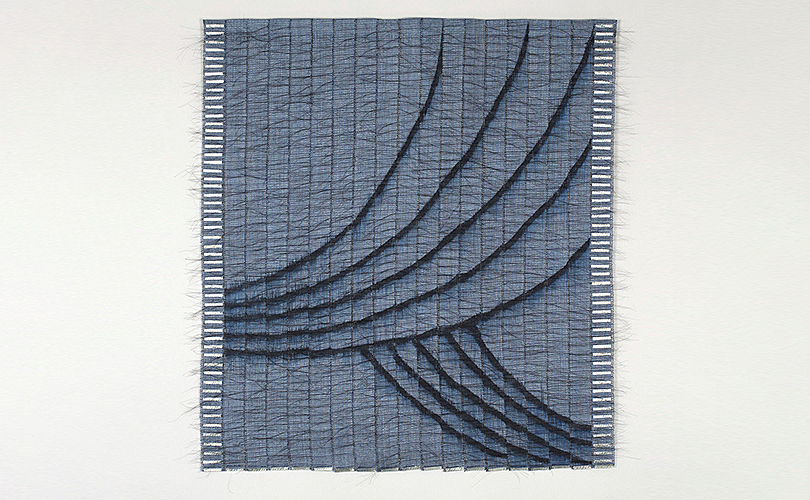
A third artist who works in horsehair is Adela Akers. Before Akers devoted her life to the arts, she completed studies to be a pharmacist, which influences her artwork. “There is a mathematical discipline in the way the work is constructed,” says Akers. “This mathematical sequence is in strong contrast to the organic process — handweaving — and materials — linen and horsehair — that bring the work to fruition.” In the 1970s, Adela Akers lived on the East Coast teaching at Temple University, but she has been creating art as a resident of Califonia for the last 25+ years. Drawing inspiration from African and South American textiles, Akers creates woven compositions of simple geometric shapes, bands, zigzags and checks. She incorporates horsehair into many of her weavings, adding texture and dimensionality. She also cuts metal strips — from recycled California wine bottle caps — and stitches them into the woven linen strips that make up these works. Her techniques and materials produce images that change under different lighting conditions. In Night Curtain, the horsehair becomes a veil through which metal can shine through, reminiscent of stars peeping through a thin curtain of clouds in the night sky.
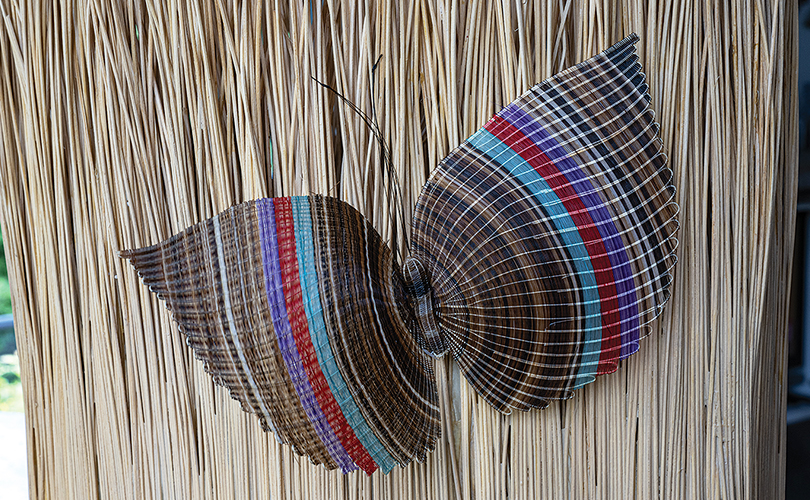
Finally, we were introduced this month to crin, a unique traditional form of horsehair art making from Chile by Caroline Yrarrázaval. When the artist visited bga in June, she brought us a beautiful example of that work. Artisans from a remote rural area of Chile create miniature flowers, animals, butterflies, birds, angels, and witches, woven out of crin de caballo, dyed or natural-colored horsehair. Their delicate creations are unique to this part of the world, largely due to their geographic and historical isolation. The horsehair weaving in Chile uses strands from the horses’ tails — thicker, longer and sturdier than that of their manes — combined with the imported vegetable fiber ixtle to keep the structure more firm and durable. The decorative pieces come almost exclusively from two neighboring rural villages, Rari and Panimavida, located 22 kilometers east of the town of Linares in the Andean foothills, roughly 300 kilometers south of Santiago. “Sitting in their doorways or under a tree, during the evening or between domestic tasks, some 150 women carry out the intricate labor of weaving the horsehair, a tradition that has been passed down for over two hundred years, using only their hands and a needle to finish off their creations,” wrote Maria Vallejos, for AARP International (Mariela Vallejos, “Tightly Woven Community,” AARP International, https://www.aarpinternational.org/the-journal/current-edition/tightly-woven-community). The horsehair used by Kemp and Akers, by contrast, comes from live horses overseas, mainly from the Far East, China and Mongolia.

